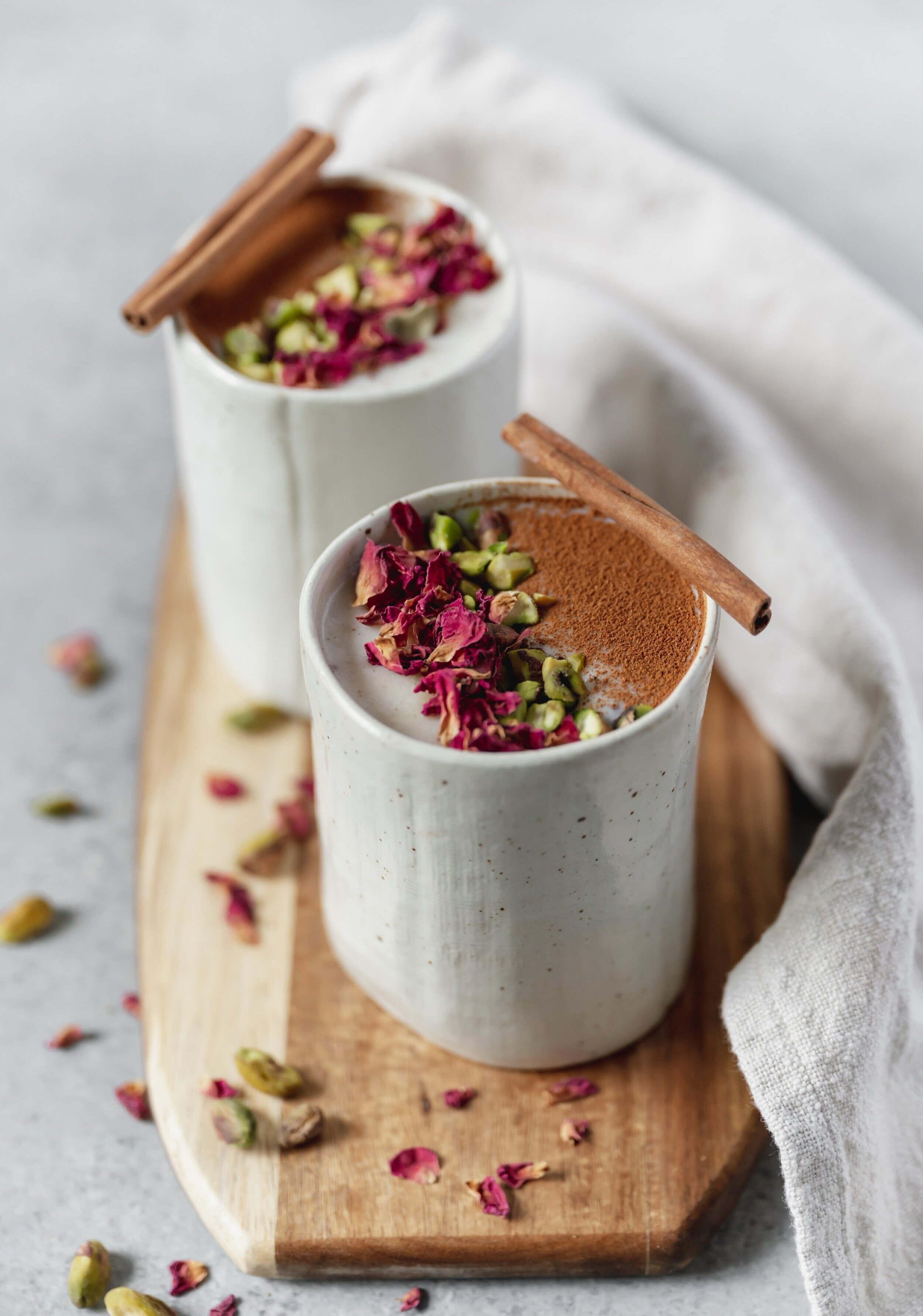Sahlab/Salep
It’s amazing to think that 820-919 years ago, our very own ancestors could have been having this exact same cup of sahlab that we’re drinking right now.
Salep and Rare Orchids: Facing Extinction
It takes 1,000 to 4,000 orchid plants to make a single kilogram of salep.
Salep originated in Turkey during the Ottoman Empire. However, tracing the exact origin of Ottoman cuisine and its ingredients is almost impossible since the empire’s Jewish, Christian, and Muslim populations have been exchanging recipes for over 6 centuries.
Constantinople was the center of trade, and so, a multitude of imports from all around the world arriving on its shores have surrounded the origin of salep with mystery and is always up for a debate.
Where does it come from?
Salep comes from the tubers of wild orchids. The orchids are pulled out of the earth before the plant blooms, boiled in water, left out to dry, and processed into a powder. Although the orchids are also harvested in West Asia, Turkey possesses more than 170 kinds of orchid species – many of which are exclusively found in Turkey!
The root is also known for its many healing properties, which comes from glucomannan and heals respiratory problems like bronchitis and coughs.
The Dilemma
Unfortunately, these orchids have become so endangered that the Turkish government has decided to ban their export.
The renewed popularity of salep is driven by consumer demand for traditional, organic and alternative food but consumers may not realize that traditional products can contain threatened wildlife.
The orchids in Turkey are under very serious threat. – botanist Ozdemir Ozhatay, Istanbul University said.
For this reason it is forbidden to export – but they are still using it in Turkey for ice cream.
Ms. Ozhatay added that the quantities needed to supply the booming industry (of salep) were putting the flower under great strain.
Traditional orchid pickers offered their own insight on this unfortunate decline:
“We sell the milk of our goats, and collect orchids. But the flowers are much more difficult to find – more and more ice cream producers are using them, and it is disappearing. You have to go higher and higher into the mountains to find them.
The damage is so great that environmentalists are now calling for a total ban on the use of salep.
Our Duty
It is our duty to remember to be kind to our planet as we uphold our cultures and traditions. It is important to understand how our habits affect the planet, and what the long terms effects will be.
Sustainability in our sourcing of food is essential. We must be more aware about where our food is coming from, and how.
We must not turn a blind eye to the reality of the food industry, and the implications of what our high demands are causing the planet.
We must hone in on sustainable agriculture, and educate ourselves more, to be able to live in a world that we could proudly pass on to our children for generations to come.
Sources:
www.medium.com/brownbook/salep-d06b9e6I3b14
www.cambridge.org/core/journal/oryx/article/harvesting-of-salep-orchids-in-northwestern-greece-continues-to-threaten-natural-populations
http://news.bbc.co.uk/2/hi/science/nature/3126047.stm
Ingredients:
Milk
Sahlab powder
(If sahlab is unavailable, use 25g cornstarch for 1L of milk)
Optional recommended flavorings:
Sugar
Rose water
Vanilla extract
Mastic
Cinnamon
Pistachio
Nutmeg
Raisins
Coconut flakes
Directions:
In a pot, add milk, salep powder, and spices of your choice and stir until almost boiling and the salep thickens.
Once hot and thicken, pour into mug and top with pistachios, coconut flakes, or any toppings of your choice.
Serve hot.
Bon appétit!
